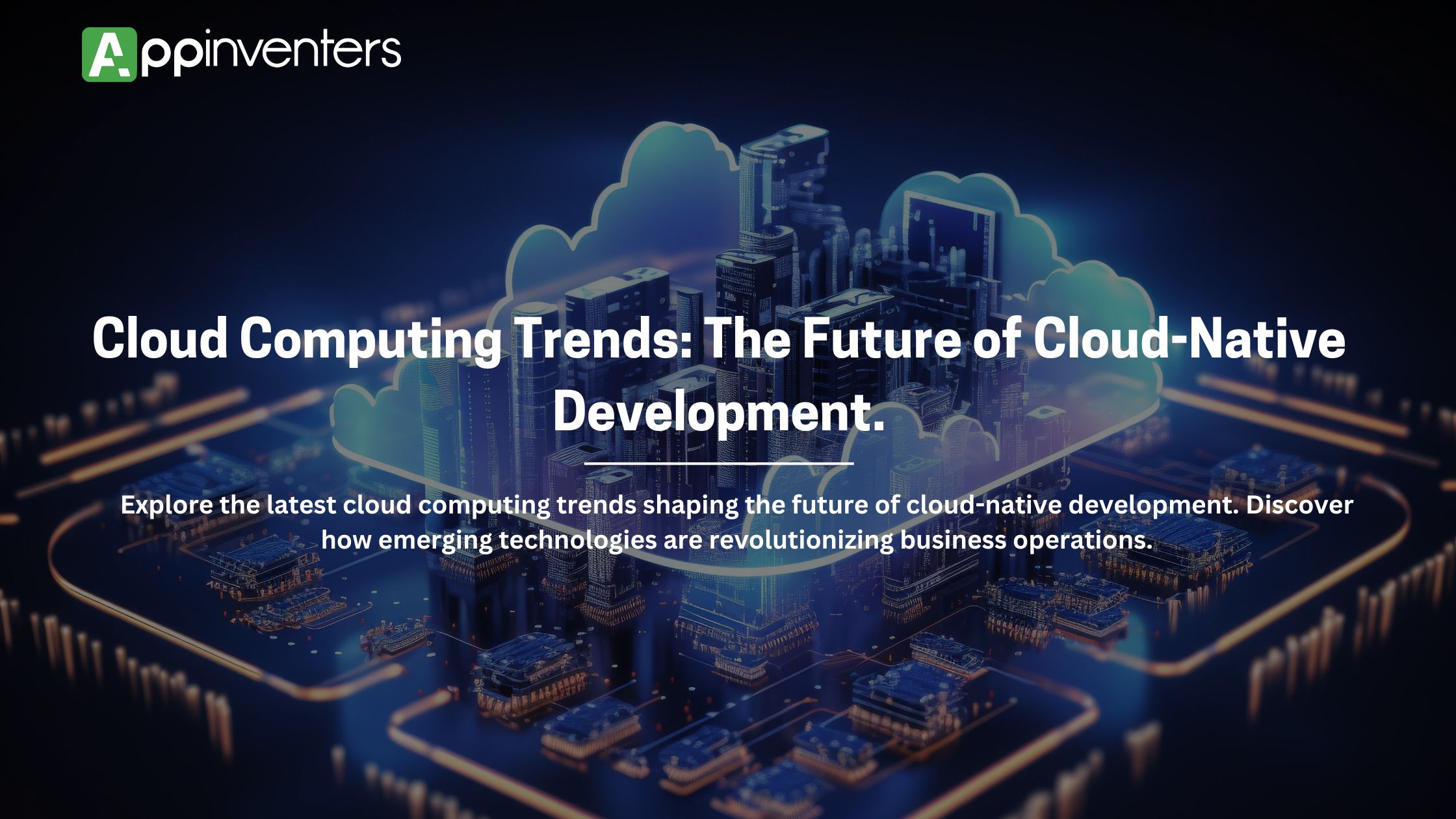In the ever-evolving space of technology, the mobile app landscape stands as a vibrant and dynamic arena, constantly shaping and reshaping itself to meet the demands of an increasingly digital world.
Mobile applications have become an integral part of our daily lives, serving as tools for communication, entertainment, productivity, and more. Understanding the trends and opportunities within this scenario is essential for individuals and businesses. Such a guide to Mobile app development can help with decisions, innovation, and strategies.
Trends Shaping the Mobile App Landscape
1. AI and Machine Learning Integration
Artificial Intelligence (AI) and Machine Learning (ML) have completely changed the mobile app landscape, making applications smarter and more personalized. From virtual assistants that understand and respond to user commands to predictive algorithms that tailor content recommendations, AI has taken user experiences to new heights.
2. Augmented Reality (AR) and Virtual Reality (VR)
AR and VR technologies have opened a world of possibilities within mobile apps. From immersive gaming experiences to practical applications in real estate and interior design, these technologies are dissolving the lines between the physical and digital realms.
3. 5G Connectivity
The rollout of 5G networks has introduced lightning-fast internet speeds and have reduced speed gap, enabling mobile apps to offer seamless streaming, real-time interactions, and enhanced user experiences. This trend has the potential to reshape industries and fuel the growth of bandwidth-intensive applications.
4.Health and Wellness Apps
The global focus on health and well-being has led to a rise in health and wellness apps. These apps monitor fitness levels, provide mental health support, offer dietary guidance, and even connect users with medical professionals virtually, expanding the horizons of telemedicine.
5. E-Commerce Evolution
Mobile apps have transformed the way we shop, and this trend continues to evolve. From one-click purchases to augmented reality “try-before-you-buy” features, e-commerce apps are using technology to make shopping more convenient and engaging.
Opportunities in the Mobile App Landscape
1. Specific Niche Apps
Identifying specific local needs can lead to the creation of hyper-targeted apps that cater to specific audiences. Whether it’s a language learning app for a particular dialect or a neighbourhood-specific marketplace, catering to specific interests can lead to dedicated user bases.
2. Enterprise and Productivity Apps
The trend toward remote work has increased the importance of mobile apps for productivity and collaboration. Targeting mobile app development that facilitates remote work, project management, and team communication can tap into a growing market of professionals seeking efficient solutions.
3. Sustainability and Social Impact Apps
With a heightened global awareness of environmental and social issues, there’s an opportunity to create apps that promote sustainable living, charitable giving, and community engagement. Apps that inspire positive actions can connect to users on a deeper level.
4. Gaming and Entertainment
The gaming and entertainment sectors are the grounds for innovation. From casual games to immersive VR experiences, the demand for interactive and engaging content continues to grow. In-app purchases, subscriptions, and advertising models offer monetization opportunities.
5. Personalized Health and Fitness
Health and wellness apps have gained significant attention, but there’s still room for growth. Personalized fitness routines, mental health support, and AI-driven health diagnostics are areas where apps can make a substantial impact.
Challenges and Considerations
While the mobile app market is filled with opportunities, there are challenges that must be navigated:
1. Market Saturation
The app stores are crowded, making it difficult for new apps to gain visibility. A solid marketing strategy and unique concept are crucial and needed.
2. User Privacy and Data Security
As apps collect and store user data, ensuring data privacy and security is important. Compliance with regulations such as GDPR and CCPA is vital.
3. Rapid Technological Advances
Staying updated on all of the rapidly evolving technologies is a challenge. What’s up and running today will become outdated tomorrow.
4. Monetisation Strategies
Finding the right monetization strategy that aligns with user expectations while generating revenue can be tricky and difficult. Choices range from free apps with ads to subscription models and one-time purchases.
Guide to Mobile app development: From Inspiration to Concrete Concept

In the ever-evolving landscape of mobile applications, innovation is the driving force behind success.
Every successful app starts with a spark of inspiration, but it takes careful nurturing and development to transform that idea into a concrete concept that captivates users. Navigating this journey requires a blend of creativity, strategic thinking, and meticulous planning.
1. Finding Inspiration
App ideas often come from real-life problems or unmet needs. Observing your own experiences or those of others can provide valuable insights.
Stay curious and open-minded, seeking inspiration from a variety of sources, such as your hobbies, industry trends, or even conversations with friends and colleagues.
2. Defining the Problem
Once you get to know the initial concept, dive deeper into the problem it aims to solve. Clearly define the pain points your app will address. Understanding the problem thoroughly is essential for a mobile app development process that truly relates to users.
3. Market Research
Conduct thorough market research to identify existing solutions and potential competitors. Analyze their strengths, weaknesses, and user feedback.
This will help you identify gaps in the market that your app can fill or areas where you can offer a superior solution.
4. Target Audience
Define your target audience. Who are the primary users of your app? What are their preferences, needs, and pain points?
Building user personas can help you tailor your app’s features and design to cater to their specific requirements.
5. Conceptualization
Translate your idea into a solid concept. Sketch out the app’s user interface, user flow, and core features.
Visualizing the app’s layout and interactions will help you refine your idea and identify potential challenges early on.
6. Prototyping
Create a prototype of your app using wireframing tools or prototyping software. This interactive mockup allows you to test the app’s functionality, gather feedback, and make necessary adjustments before proceeding to development.
7. Feedback Loop
Engage with a diverse group of individuals to gather feedback on your prototype. This could include potential users, industry experts, and even mentors. Constructive criticism can help you identify blind spots and make improvements.
8. Iterative Development
Based on the feedback received, refine your concept and iterate on the prototype. This process ensures that your mobile app development process is continually improving and aligning with user expectations.
9. MVP Development
It is very important to first develop a Minimum Viable Product (MVP). The MVP includes only the core features necessary to solve the primary problem. This approach allows you to launch your app faster, gather real user data, and validate your concept in the market.
10. User-Centric Design
Prioritize user-centric design throughout the development process. Interactive navigation, clear interfaces, and a seamless user experience are important for attracting and retaining users.
11. Testing and Refinement
Detailed testing is essential to identify bugs, usability issues, and performance glitches. Regularly update and refine your app based on user feedback and usage patterns.
12. Marketing Strategy
Develop a detailed marketing strategy that encompasses the pre-launch, launch, and post-launch phases. Building excitement, creating a compelling app store listing, and using social media channels can help generate awareness and downloads.
13. Launch and Feedback
Launch your app on the chosen platforms, such as the App Store or Google Play. Encourage users to provide feedback and ratings, which can boost your app’s credibility and visibility.
14. Continuous Improvement
App development doesn’t end at launch; it’s an ongoing process. Continuously monitor user feedback, track key performance metrics, and release updates with new features and improvements.
15. Scaling and Monetization
As your app gains traction, look for monetization strategies that align with your user base. This could include in-app purchases, subscriptions, or advertising. Scaling your app to accommodate growing user numbers is equally important.
Preparing for Success: Research and Market Analysis in App Development

In the fast-paced and competitive world of app development, the foundation for success lies in thorough research and detailed market analysis. These critical steps guide developers in creating apps that not only meet user needs but also stand out in a crowded marketplace.
Before diving into the development process, a deep understanding of the target audience, market trends, and competition is essential for crafting a winning app strategy.
1. Understanding the Importance of Research and Market Analysis
Research and market analysis guides app developers on their journey. These steps are key in ensuring that the app aligns with user preferences, addresses genuine pain points, and is strategically positioned to attract and retain users.
They minimize the risk of investing time and resources into an app that might not relate to the intended audience or fail to stand out amidst the fierce competition.
2. Identifying the Target Audience
Defining the target audience is the first and foremost step. Knowing who will use the app helps developers customize features and the user experience to cater to their specific needs and preferences.
Creating user personas based on demographics, behaviors, and motivations provides a clear picture of the intended users.
3. Analyzing User Needs and Pain Points
Research allows developers to understand the challenges and pain points that users face. By identifying these pain points, developers can create solutions that genuinely add value to users’ lives. The more accurately the app addresses users’ needs, the higher the chances of success.
4. Market Trends and Emerging Technologies
Staying updated on current market trends and emerging technologies is important. Developers must be aware of the latest advancements, as integrating relevant technologies can provide a competitive edge.
This could include AI, AR/VR, blockchain, or voice recognition, depending on the market demands.
5.Competitor Analysis
Analyzing existing apps that cater to a similar audience helps identify gaps and opportunities in the market.
Understanding competitors’ strengths and weaknesses allows developers to differentiate their apps and offer concepts that attract users.
6. Monetisation Strategies
Researching various monetization strategies is very important for generating revenue from the app. This could include free-to-use models, in-app purchases, subscriptions, or ad-supported approaches. Choosing the right strategy depends on the target audience and the value the app offers.
7. Platform Selection
Choosing the right platform for app deployment is a strategic decision. Research user demographics, device preferences, and platform-specific trends to determine whether your app should be developed for iOS, Android, or both.
Research Methods and Tools
1. Surveys and Interviews
Conduct surveys and interviews to collect direct insights from potential users. This qualitative data provides valuable information about user preferences, expectations, and pain points.
2. Data Analytics
Use analytics tools to analyze user behaviour on existing platforms or websites. This data can reveal user preferences, usage patterns, and potential opportunities.
3. Competitor Analysis Tools
Use tools that can provide insights into competitors’ app performance, and use them to download statistics and user reviews.
4. Social Media and Forums
Engage with relevant social media groups and forums to understand discussions, opinions, and trends within the target audience.
5. Focus Groups
Organize focus groups with representative users to gather feedback on app concepts, features, and the user experience.
Implementing Research and Analysis Findings
After gathering research and analysis findings, it’s time to translate them into the necessary steps:
1. Refine the App Concept
Include user feedback and market insights to refine the app concept. Ensure that the main features directly address user needs.
2. Design and User Experience
Design the app’s interface and user experience based on user preferences and behaviours. Prioritize interactive navigation and an engaging design.
3. Feature Prioritization
Determine which features are essential for the app’s initial launch. Avoid feature overload, as it can overwhelm users and delay development.
4. Unique Selling Proposition (USP)
Develop a prototype, or MVP, and test it with a select group of users. Gather feedback and iterate based on their input to refine the app further.
5. Marketing Strategy
Develop a marketing strategy that uses your research findings. Tailor your messaging to relate to your target audience and emphasize the app’s main benefits.
Blueprinting Your App: Crafting a Robust and User-Centric Design

In the ever-changing mobile app development environment, crafting a robust and user-centric design is similar to creating a blueprint for a masterpiece. Just as architects meticulously plan the layout of a building, app designers lay the foundation for an exceptional user experience through thoughtful design.
From interactive navigation to engaging visuals, a well-crafted app design can captivate users, enhance usability, and contribute to the overall success of the application.
1. Understanding the Significance of App Design
App design goes far beyond aesthetics; it includes the entire user journey, from the first interaction to the last. A user-centric design ensures that the app addresses user needs and pain points while providing a seamless and enjoyable experience.
A well-thought-out design can reduce friction, increase user engagement, and ultimately drive the app’s success.
2. User-Centered Approach
The main principle of app design is to place the user at the centre of every decision. Understand your target audience’s preferences, behaviors, and goals. This information guides design choices that relate well with users and meet their expectations.
3. Information Architecture
Craft a logical and interactive structure for your app. Organize content and features in a way that makes sense to users, facilitating easy navigation. A clear information architecture increases user satisfaction.
4. Wireframing and Prototyping
Before getting into a detailed design, create wireframes and prototypes. Wireframes outline the app’s layout and essential elements, while prototypes offer interactive mockups for testing functionality. These early-stage visuals help identify design flaws and refine the user flow.
5. Consistency and Familiarity
Maintain design consistency across the app. Consistent colour schemes, typography, and UI elements create a consistent user experience. Familiar design patterns enhance usability, as users can quickly understand how to interact with the app.
6. Responsive Design
In the era of various devices and screen sizes, responsive design is important. Ensure your app adapts seamlessly to different devices, from smartphones to tablets, providing a consistent experience despite screen size.
7. Visual Hierarchy
It is very important to provide a clear visual hierarchy to guide your users’ attention. Highlight essential elements using contrast, size, and placement. This hierarchy directs users toward important actions and content.
8. Accessibility
Design with accessibility in mind to ensure your app is usable by individuals with disabilities. Consider factors like text size, colour contrast, and screen reader compatibility to make your app easy and friendly to everyone.
9. Feedback and Validation
Provide immediate feedback on user actions. Whether it’s a button press or a form submission, users should know their interactions are recorded. Validation messages reassure users that their inputs are correct.
10. Testing and Iteration
Regularly test your app’s design with real users. Collect feedback from people on usability, navigation, and the overall experience. Work-based on this feedback to refine the design and address any issues.
11. Onboarding and Tutorials
Design a user-friendly process that can help people with the onboarding process. This will be helpful to guide new users through the app’s features. Use interactive tutorials or tips to introduce functionalities, helping users get comfortable with the app.
12. Minimalism and Simplicity
Embrace a minimalist design approach to avoid overwhelming users with excessive visual clutter. Keep interfaces clean, focusing on the most important elements to guide user actions.
13. Branding and Identity
Include your brand’s visual identity in the app’s design. Maintain a balance between brand elements and user-centered design principles to create a consistent and memorable experience.
14. User Testing and Feedback
Try to involve users in the design process by conducting usability testing and including their feedback in the design process. Real-world usage insights can show design flaws and areas for improvement.
15. Adapting to Feedback
Be open to incorporating user feedback and making design adjustments based on user preferences. This approach ensures that the design continually evolves to meet user needs.
Conclusion
Mobile app development is not at all a one-time work- it is a continuous cycle that keeps going. Right from the conception of the idea to the ever going process of making sure the app is free from any sort of bugs- the process will continue to make things even better!
For your insightful journey of mobile app development, Appinventers are experienced, and the expert panel is more than excited to make sure Your App Soars the Market Charts and the Logic Files!
We are ready! Are you?













